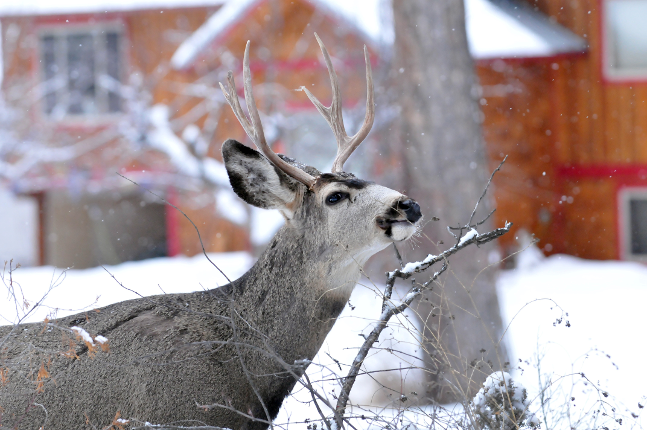Kootenay Mule Deer Survival Monitoring
This is a five-year Mule Deer monitoring project to assess factors limiting population growth and recommend actions to increase abundance. Project spin-offs will support restoration of Mule Deer habitat in the Upper Kootenay area, where the FWCP has invested substantial funding in ecosystem restoration. GPS collar data will be used to identify Mule Deer migration routes, assess use of ecosystem restoration sites, and identify important habitats for ecosystem restoration planning, which will occur in year five.
Results will include:
- up-to-date information on Mule Deer survival and causes of mortality;
- identification and mapping of Mule Deer migration routes, which are not known for these sub-populations;
- identification of important seasonal habitats and migration routes to support ecosystem restoration projects; and
- strengthened relationships with stakeholders by involving club members in project activities.
Final Report: Executive Summary
Mule deer (Odocoileus hemionus) are a highly valued species in British Columbia, and have declined across the Kootenay Region over the past 3 decades. The Ministry of Forests, Lands and Natural Resource Operations (FLNR) initiated a 5-year project to monitor mule deer doe survival, fawn recruitment and cause of doe mortality in 4 populations that represent distinct habitat types occupied by mule deer across the region. GPS collar data will be used to identify important seasonal habitats and migration routes for Ecosystem Restoration (ER) activities.
One hundred and eight GPS collars have been deployed on adult female mule deer since 2014/15 in three study areas (Grasmere [MU 4-02], Newgate [MU 4-03], Dutch-Findlay [MU 4-26] and West Kootenay [MUs 4-08, 4-09 and 4-15]). There have been 44,359 monitoring days and 25 mortalities to date. Cause of mortality included 7 cougar kills, 6 wolf kills, 3 vehicle collisions, 2 unknown predator kills, 1 unlicensed hunting, 1 health-related mortality, 1 natural mortality (avalanche) and 4 unknown mortalities. Preliminary survival rates for Year 3 (May 2016 – March 2017) are 0.78 for MU 4-26, 0.89 in MU 4-02 and 0.84 in MU 4-03. Survival rates will likely decrease with the pulse of mortality expected in the early spring. Fawn recruitment surveys are underway and results will be used to estimate finite population growth in each sub-population.
The project is still in the data collection phase, which will support the analysis of limiting factors and investigation of ER potential in Year 5. Multiple high use areas winter and summer ranges were identified using GPS collar data. Data from this project is also supporting other mule deer research projects in the Upper Kootenay, including survival monitoring of translocated urban deer, a comparative health assessment of urban and non-urban deer, and a master’s project investigating factors influencing spring migration.
Click the provincial database link below to read the full final report for this project.


